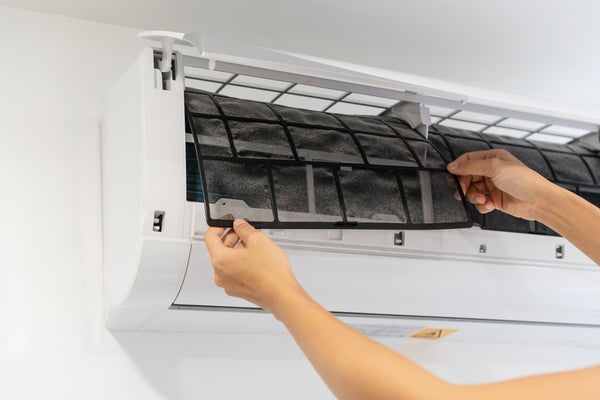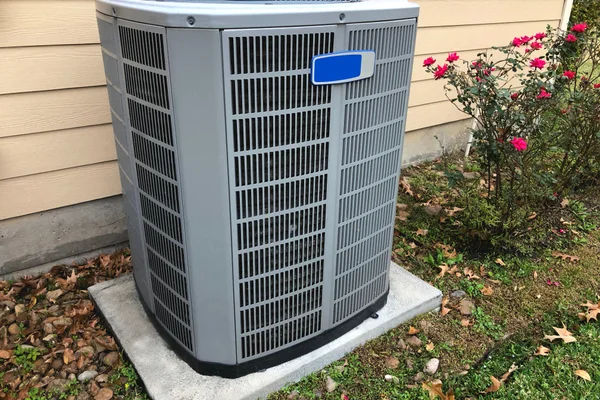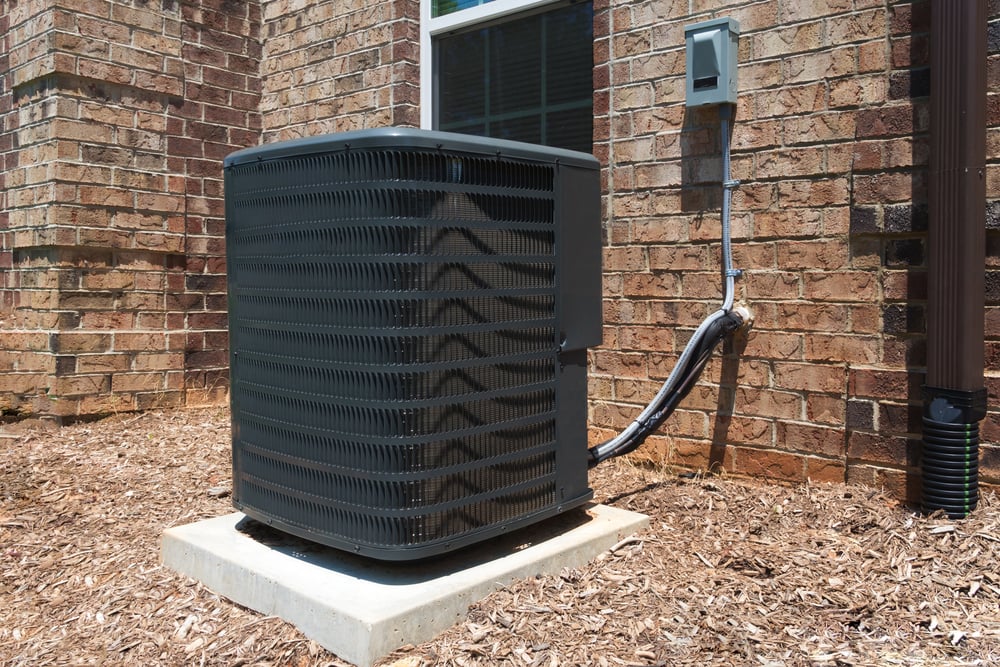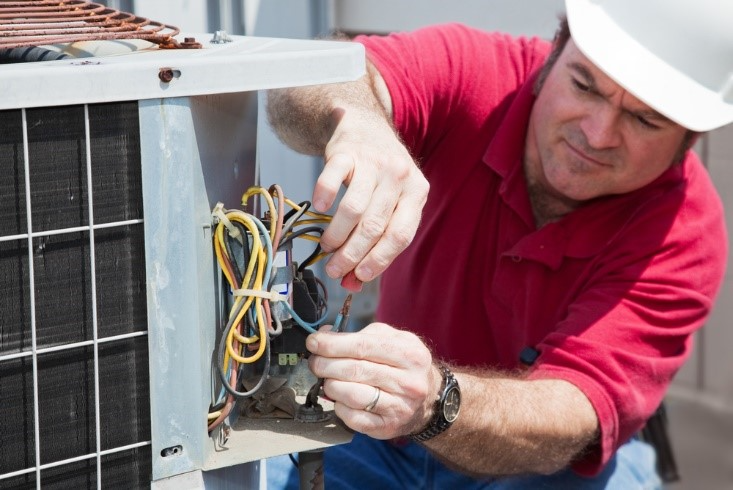Professional HVAC inspection costs can be pricey if you don’t have home warranty coverage. Even if you have a home warranty, it can feel empowering to learn how to do it yourself. American Home Shield® is here with the steps to take when performing your very own AC inspection.
HVAC Inspection Checklist
- How to Conduct a DIY HVAC Inspection
- Make sure your thermostat is working properly.
- Shut off the power.
- Remove debris from the external HVAC unit.
- Clean and repair the fins.
- Clear the area around the unit.
- Level the HVAC unit.
- Clean the evaporator coil.
- Check the evaporator drain.
- Replace the filter.
- Final steps.
- How often should I change my HVAC filter?
- HVAC vs Furnace
1. Make sure your thermostat is working properly.
Start by checking your thermostat. This can be as simple as raising and lowering the temperature to make sure your heater and A/C kick in. Calibrating your thermostat can also help with efficiency. If your thermostat needs to be replaced, consider investing in a smart thermostat, which may be able to save you money on your utilities.
2. Shut off the power.
Safety first! Find the correct switch on your breaker box and turn off the power to the inside unit. On the outside unit, turn off the on/off switch. This is incredibly important, as you’ll soon be removing parts of the unit.
3. Remove debris from the external HVAC unit.
Start by taking the protective cage off the unit’s fan. Remove any excess leaves or debris from the interior with a wet/dry vacuum.
4. Clean and repair the fins.
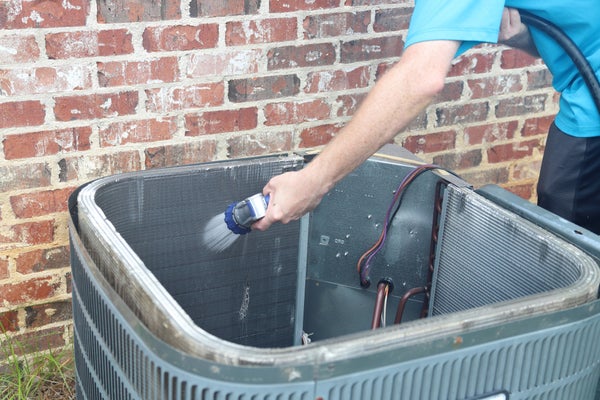
Use a sprayer hose to spray the fins from the inside of the unit, washing away any debris. Do not use a pressure washer, as that can be too powerful for the delicate fins. If the fins are exceptionally dirty, you can find fin-cleaning spray at a local hardware store.
The fins need to be straight in order to keep airflow efficient throughout the year. Take a butter knife or a fin-straightening tool and straighten the fins carefully. Reattach the fan cage.
5. Clear the area around the unit.
Try to keep the area free of shrubs, trees, or other vegetation. To get your HVAC system ready for winter, put a piece of plywood or plastic on top of the unit to protect it from falling debris. However, do not cover the unit, as that is an invitation for pests to move in during off months.
Here are some tips for heating maintenance.
6. Level the HVAC unit.
Just like your foundation, your external HVAC unit can shift over time. A condenser that isn’t level can cause the compressor to fail much earlier than it should. As part of your HVAC inspection, check if the unit is level, and if not, use rot-resistant shims to prop up whichever side needs it; you can find shims at your local hardware store.
7. Clean the evaporator coil.
Now head inside and follow these steps:
- On your internal unit, open the evaporator coil door and give it a good dusting.
- Then, spray it with commercially available no-rinse coil cleaner, which will turn into foam and drip into the drain pan.
- Clean the drain pan with hot water, soap, and a small amount of bleach.


